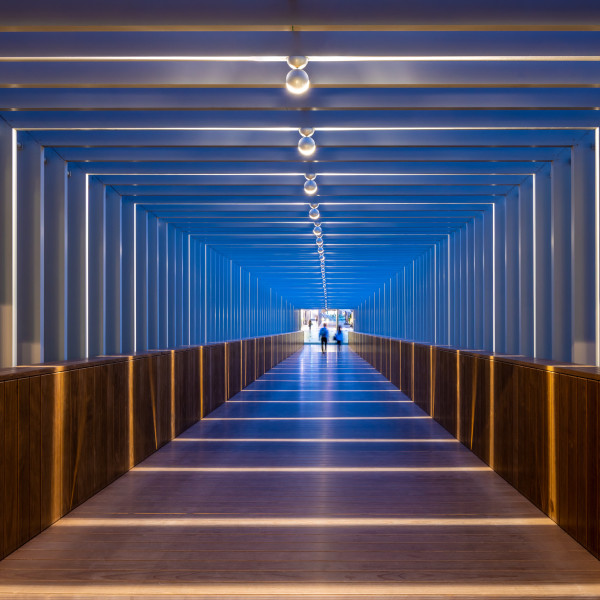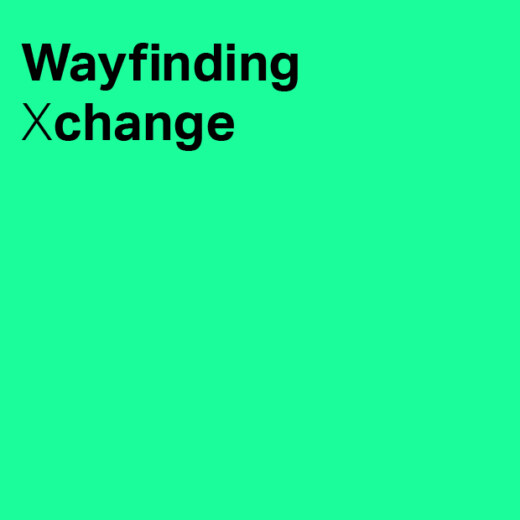Lighting up spaces of every size
Nulty works on a huge variety of developer-owned and tenant-led fit-outs, from residential buildings through to boutique retail, shopping malls, restaurants, hospitality, and commercial spaces. Some of their largest projects are in the public sector – one in the Middle East covers an area the size of Belgium.
Never a fan of saying ‘no’ to projects, one of the things that Paul really enjoys about lighting is dipping in and out of a huge range of sectors and project typologies. So far, his most unusual project has been lighting the Piccadilly Line tube train. That’s since led to work on the master plan for London Underground.
One of the keys to Nulty’s successful growth over the last decade or so is their investment in people. Whether that’s building strong relationships with other lead consultants or employing their own excellent people. Paul’s philosophy is that you’re only as good as the people you employ. Good consultancies thrive when there’s space for other people to grow and enjoy what they do, taking accountability and building great relationships with clients.
The interesting thing about lighting design is that there’s no official qualification needed. Nulty has designers from various design backgrounds including architecture, interior design, and product design. They look far and wide for the right talent.

Interacting and defining empty space
Paul’s own background is in theatre; studying set, costume, and lighting design. He was always really interested in space, stripping more and more physical objects out of the set and exploring peoples’ interaction with empty space. This segued into lighting and storytelling, drawing people in and creating space through the use of light.
With a lack of opportunity for lighting design for the theatre, Paul soon pivoted into architectural lighting. In fact, his dissertation was based on the idea that if ‘all the world’s a stage’ then perhaps it should have better lighting! So, he began to look at the real world as if it were a set, focusing on space and people’s connection with space through the medium of light – the art of placemaking.
Lighting the way ahead
The DNA of Nulty is very much about the emotional connection that people have with a space – and using a term borrowed from theatre – encouraging the suspension of disbelief. It’s about connecting people with a space.
Lighting can help people navigate through a space, because the eye should be drawn to the brightest point. And it’s possible to help people navigate space through the use of light intensity, rhythm, and drama.
Paul’s lighting design consultancy focusses on the interplay between surfaces and light to elicit a personal response. In some scenarios, good lighting can even negate the need for physical signage! Done right, it can help people walk into a space and get an amazing feeling – without necessarily knowing why.

The best possible service and design
Paul’s attitude towards delivering lighting design is very much about giving clients the best solution for their needs. Taking this approach has its drawbacks. Competitors will often price for the minimum to get in and out of a job. That creates a race for the bottom, which no-one benefits from, especially clients, who lose out on the best possible design and service.
Attitudes are slowly changing. The Middle East is ahead of the curve and will usually specify a lighting consultant as they do wayfinding consultants. Similarly, projects in regions like Europe are beginning to give lighting a place at the table. But it’s not a given, and still tends to happen late in the day. Nulty comes in at the RIBA stages – concept design, schematic details, and so on – it’s a linear process that begins with a brief and ends with a celebration!
Paul’s approach is to start macro and go micro, understanding the identity of the space and how people are going to engage with it. Once his team figures out why they’re lighting a space, the next step is to focus on what they’re lighting and how. Product selection comes last, keeping budget and aspiration in mind.
The ideal time for lighting consultants to join a project is when architects are two-thirds of the way through stage two. This means they can really get involved with affecting the overall design and integrating lights wherever possible. With city-wide frameworks, it’s important to get lighting on board even sooner, at the master planning stage, to give areas or zones their own character and identity, and how you move from one zone to the next.

Wayfinding – the fifth layer of light
Paul’s team takes a proactive approach to lighting design, anticipating how a space is used, and the impact lighting has on it. They take a fully collaborative and coordinated approach to lighting, and their impact is always felt in the final product.
This includes wayfinding, which Paul and his team often consider the fifth layer of light after ambient lighting, access lighting, feature lighting, and digital screens. That means there has to be a dialogue and an iterative process between lighting and wayfinding consultants.
Great lighting helps create spaces that add value to businesses – whether that’s a shopping mall in Dubai where people actively want to hang out in the evening – or stores where there’s hard data to correlate improved lighting design with increased footfall.
Lighting can also have an impact on people’s wellbeing. There’s a lot of research being done on how lighting can support neurodiversity, especially in settings such as classrooms and offices, where different qualities of light can impact people’s ability to focus.
The same applies to the hospitality sector, which might need to cater to the older population with age-related macular degeneration, alongside younger people who need 30% less light to see clearly. So, what we’re looking at is a future of increasing personalisation in lighting.
The creative challenge of sustainable lighting design
For Paul, it’s the beginning of the beginning for the future of lighting.
Recently, there’s been a shift from incandescent sources to LED. Although LED is low-energy, the manufacturing process, which requires multiple components, is actually far less sustainable than the production of traditional tungsten bulbs, which have minimal components.
Rather than looking at the energy consumption, lighting consultants need to consider the impact of the overall lifecycle of bulbs. In fact, the lowest environmental impact comes from repurposing fixtures and fittings rather than recycling them.
The future requires a low energy, low carbon lifecycle – understanding our impact on the planet whilst still making it interesting to design.
Discover more about Nulty at their website https://www.nultylighting.co.uk
Our podcast is available on Spotify, Apple Podcast and YouTube. Don't forget to subscribe and rate us!




